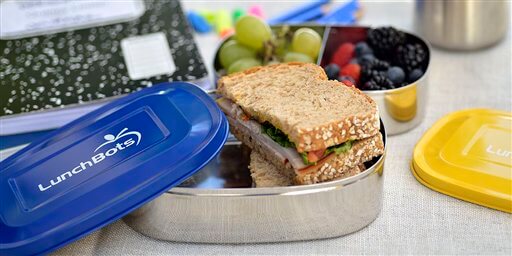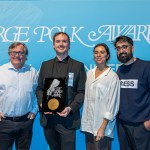
It’s entirely likely I spend too much time thinking about the lunches I pack for my 7-year-old son. After all, he probably spends all of 5 minutes inhaling my hard work.
But this is a different era from the days when I proudly toted cheese and mustard sandwiches on whole wheat in my metal “Empire Strikes Back” lunch box. For generations, lunch boxes had been just that — boxes that food got shoved into. And frankly, those boxes were better suited as weapons and shields in schoolyard scuffles than as food storage containers.
Today, parents have choices. Lots of choices. Lunch box styles vary from utilitarian soft-sided cooler bags to epicurean bento boxes or even more worldly tiffin canisters. Lunch boxes can have built-in ice packs. They can be microwaved. They can be made from bisphenol-A-free, lead-free, phthalate-free, PVC-free plastic. They can be forged from 18-gauge stainless steel.
And those changes and choices reflect not just better lunch box technology, but also social changes. What parents pack is different. In the day, my whole wheat was just rebellious enough to have the nuns who ran my school aflutter (good boys ate Wonder bread). Today’s lunches of sushi, soy nut noodle salads, nachos and samosas make it seem pathetically pedestrian.
So how does a busy parent make sense of an era when brown bagging it almost never actually involves brown bags?
In my case, I turned it into an obsession and blog (or in 2012 is that redundant?), LunchBoxBlues.com. I researched the many (many!) lunch box options, the many containers that can go inside those lunch boxes (plastic sandwich bags are so passe), the many ways of fitting foods into those containers, and the many ways of keeping the foods in those containers warm or cold.
Along the way I’ve spied some winning trends and products, and discovered some handy tips for making the most of them. The following are among my top choices:
— STAINLESS STEALS THE SHOW
Metal boxes went out of fashion when soft-sided bags came on the scene. And those insulated bags (some of them startlingly large) are still de rigueur. But for the stuff inside the bag — from thermoses to food containers and even drinking straws — stainless steel is where it’s at.
Stainless is easy to love. It’s eco-friendly and won’t stain or leach anything into food. It can handle hot or cold, goes through the dishwasher, and is nearly indestructible (even for kids). Stainless items are pricier upfront, but think of all the plastic sandwich bags you won’t be buying over the next 180 days of school.
For food containers, LunchBots rock. Available in a wide array of shapes, sizes and colors, including multi-compartment divided containers, LunchBots products (starting at about $15) offer an easy way to pack everything from sandwiches and salads to fruit and dips. The multi-compartment containers even make it easy to create bento box-style lunches (think Lunchables, but with food you choose).
The company’s all-stainless (bottom and lid) models are not watertight, but they recently introduced a line of stainless containers that have plastic lids that do seal.
For an all-in-one approach, check out PlanetBox, which looks like a bento box crossed with a lunch tray. These clamshell-style containers (available in small and large, starting at about $40) have multiple compartments into which a surprising amount of food can be packed. Plus, because the covers are integrated into the one-piece design, there are no lids for the little ones to lose.
Another cool stainless steel lunch item — drinking straws. They are exactly what they sound like: drinking straws made out of stainless tubing. They are made by various companies (an online search will pull up dozens of choices) and come straight or with a slight kink toward the top. If your kid is a straw fanatic, these are awesome.
If you get the straws (sets of four cost about $10), be sure to also get some thin bristle cleaners to make it easy to scrub out the insides of the straws now and again. I found a set of cleaning brushes for about $2.
— NO HEAVY METAL
Stainless not your style? The bento trend has gone plastic, too. The classic choice has been from Laptop Lunches, which makes a plastic snap-shut case that contains a variety of food containers. The whole thing then fits snugly inside an insulated bag. It’s rugged, made without any of the aforementioned chemicals and starts around $24.
The size of the Laptop Lunches bento system makes it ideal for younger kids. If you’re looking for something a bit larger or with more flexibility, check out Newell Rubbermaid’s new Rubbermaid LunchBlox kits, available in snack, salad and entree sizes.
Each modular kit (priced from $10 to $20) contains a variety of bisphenol-A-free containers that can be stacked in various configurations. Each also includes a customized freezer pack that stacks and interconnects with the food containers.
— IT’S ABOUT TIME
That’s what food safety all comes down to — time. Knowing how long food will stay hot or cold in a lunch box or thermos is the best way to know that the food you pack will be safe to eat.
As a general rule, perishable cold foods must be kept below 40 F. Hot foods should be held at above 140 F. If those temperatures aren’t held, you have a two-hour window to consume the food before it becomes unsafe to eat. That sounds scary, but — if you do your homework before shopping for lunch boxes and thermoses — it turns out to be very helpful.
By homework, I mean figure out what time of day your child will eat the food you pack. Now count backward to the time you pack the lunch. This is how long you need to keep the food hot or cold.
Not so long ago, that information wasn’t much help. Parents could do little more than guess how long a thermos would keep soup hot or a lunch box (even with an ice pack) would keep food cold. That has changed. Today, a growing number of manufacturers are rating their products so consumers know how long they can hold a temperature.
Lands End, for example, says its soft-sided lunch boxes maintain refrigerator temperatures for five hours (with an ice pack). Thermos’ Foogo stainless steel food jar keeps things cold for seven hours and warm for five.
One tip about thermoses — before putting food in them, always prime them to be hot or cold, depending on the temperature you want to maintain. Packing soup? Fill the thermos with boiling water for a few minutes to heat it up, then dump out the water and add the soup. Filling it with yogurt? Toss the empty thermos in the freezer for a few minutes.
— GO ORGANIC
I’m not talking about the food. If you don’t like plastic, but don’t want metal, don’t worry. There is a buffet of lunch box gear made from all manner of earth-friendly substances.
ReUseIt.com, for example, sells cloth napkins woven from a blend of hemp and organic cotton (four napkins for $7.95) to help you have what it calls a litter free lunch. Just think of all the paper towels and napkins you won’t need to buy (or put in a landfill). More importantly, they will hold up to grubby kid hands and faces better than flimsy paper products.
Outdoor gear shop REI sells a set of bamboo utensils — fork, knife, spoon and (of course) chopsticks, as well as a recycled carrying case — for $12.95. The benefit here isn’t just that the utensils are eco-friendly. Bamboo also happens to be very lightweight, perfect for little hands.
If you prefer bags over boxes, there’s an eco option for you, too. LunchSkins is one of many companies that sell reusable sandwich bags to help you avoid the disposable plastic variety. Their bags (prices range from about $8 to $11) come in snack, sandwich and sub sizes, and are made from dishwasher-safe, food-safe fabric. They also come in a variety of funky designs (including a soccer ball pattern).


























